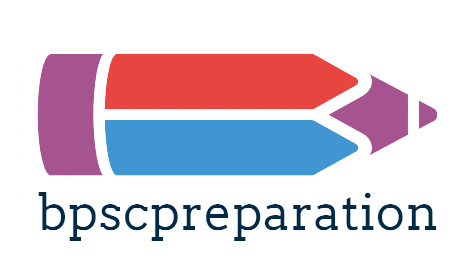During the British rule in India many sections of the society were under great suppression. People sooner or later realised this fact and leaders from different sections of the society stood up to reclaim their rights from the Britishers. One key section of such people are the tribals who were suppressed by the British rule in various forms. Their lands were confiscated, their conventional profession were challenged and many such rights were forfeited by the officials under the British rule. As a result there were uprisings by the tribal communities from time to time. In this post you will know about various tribal rebellions or uprisings such as Munda, Santhal, Ho, Bhumij, Kol, Sapha Hor, Chuar, Tana Bhagat etc in Bihar.

Tribal Revolts in Bihar
Following are the details of the tribal uprisings that were happened during the British rule in the region of Bihar:
| Revolt Name | Area | Year | Led By |
| Dhal Revolt | Singhbhum-Manbhum | 1767-1777 | Jagannath Dhal |
| Paharia Revolt | Santhal Pargana or South of River Bansloi | 1772-1782 | Ramna Aahdi |
| Tamar Revolt | Chhotanagpur Region | 1782-1820 | Thakur Bholanath Singh |
| Tilka Movement | Rajmahal Hills, Sultanpur, Bhagalpur, South Bihar etc | 1783-1785 | Tilka Manjhi |
| Chero Movement | Palamau | 1800-1818 | Bhukkan Singh |
| Ho Revolt | Singhbhum Region of Chhotanagpur | 1820-1822 | Raja Parhat |
| Kol Revolt | Chhotanagpur Region | 1831-1832 | Buddhu Bhagat |
| Bhumij Revolt | Singhbhum and Veerbhum | 1832-1833 | Ganga Narayan |
| Santhal Hul or Santhal Revolt | Started from Bhagnadih, later the region known as Santhal Pargana | 1855-1856 | Sidhu and Kanhu |
| Sardari Movement | Chhotanagpur Region | 1858-1895 | Munda Sardars |
| Safahor or Safahor Movement | South Bihar, Present Jharkhand | 1870 | Lal Hembrom or Laal Baba |
| Kharwar Movement | South Bihar, Present Jharkhand | 1874 | Bhagirath Manjhi |
| Munda Revolt or Ulgulan | Khunti, Ranchi, Basia, Tamar, Chakradharpur etc. | 1895 | Birsa Munda also known as Dharti Aaba, Birsa Bhagwan |
| Tana Bhagat | Bishunpur, Ghagra, Chainpur, Kudu, Mandar, Raidih etc. | 1914 | Jatra Oraon |
Tribal Revolts in Bihar Important Points
Dhal Revolt: This revolt took place in 1767 under the able leadership of the deposed king of Dhalbhum named Jagannath Dhal. It continued for 10 years. Later the king was reinstated by the Britishers and the revolt ended.
Paharia Revolt: This revolt occured in the Santhal Pargana. There were three tribes namely Mal, Kumarbhag and Sauriya. They were active around the region of Bansloi river and Rajmahal hills. They struggled against Rajputs, Mughals and Britishers. This was led by Ramna Aahdi and assisted by Kariya, Changru and Naib Sujja.
Tamar Revolt: This revolt was against Tehsildars, Zamindars and the Dikus (outsiders). Thakur Bholanath Singh led this revolt along with Dukh Manki, Regu and Konta.
Tilka Movement: Tilka movement was led by Tilka Manjhi in 1783. The objective of the movement was to establish the autonomy of the tribal in the region and throw out the Britishers from the area. He circulated sukhna leaves in the villages. Tilka used the techniques of guerrilla warfare. A British Augustine Cleveland was shot by the arrow of Tilka.
Chero Movement: This movement was held in Palamau and led by Bhukkan Singh.
Ho Revolt: This revolt was against the British and the Zamindars in the Singhbhum region of Chhotanagpur plateau. Zamindar Raja Jagannath singh was also opposed by the tribals.
Kol Revolt: This rebellion was against the Zamindars and the British in the Chhotanagpur region led by Buddhu Bhagat. The revolt spread to Palamu and Manbhum regions as well. Sindrai and Surga were other leaders of the revolt.
Bhumij Revolt: The revolt took place around Veerbhum and Singhbhum region and led by Ganga Narayan. It was against the exploitation of the region by King of Veerbhum, Police officers, Munsifs, and other Dikus.
Santhal Revolt or Santhal Hul: Santhal revolt is also known as Santhal Hul. The main leaders of the revolt were Sidhu, Kanhu, Chand and Bhairav. First meeting was held among the tribals in 1855 at Bhagnadih. Major Burrow was defeated by the Santhals. Later the revolt was suppressed. Karl Marx called this revolt as the first mass revolution. Later, Santhal Pargana was crafted by the Government for the Santhals.
Safahor Movement: The movement was led by Baba Hembrom who decided to give it a religious boost. He preached religious tenet to the tribal and suggested to fight with the Britishers with a confident spirit. Baba organised Deshdrohak Dal in Santhal Pargana.
Khairwar Movement: It was started in 1874 and was a non violent struggle against the Britishers led by Bhagirath Manjhi.
Munda Revolt: You can read about Munda Revolt by clicking Here.
Tana Bhagat: Jatra Oraon started this movement in 1914. It opposed intoxication, meat and dancing among the tribal and inspired the tribal to live a simple life. It also proposed the practice of Jhoom cultivation. Other leaders of the revolt were Shibu Bhagat, Balram Bhagat, Bhikhu Bhagat, Devmamiya etc. Tana Bhagat also participated in the Gaya session of Congress in 1922 and Nagpur Session of Congress in 1923. He also gifted a sum of Rs. 400 to Gandhiji in Ramgarh Session of Congress in 1940.
Tribal Revolt in Bihar FAQ
Who led the Santhal Revolt?
Sidhu and Kanhu was the main leaders of the Santhal Revolt.
What was the other name of Birsa Munda?
The other name of Birsa Munda was Dharti Aaba.
In which region Ho revolt occured?
Ho revolt occured in Singhbhum region.
Who led the Kol revolt?
Kol revolt was led by Buddhu Bhagat.

